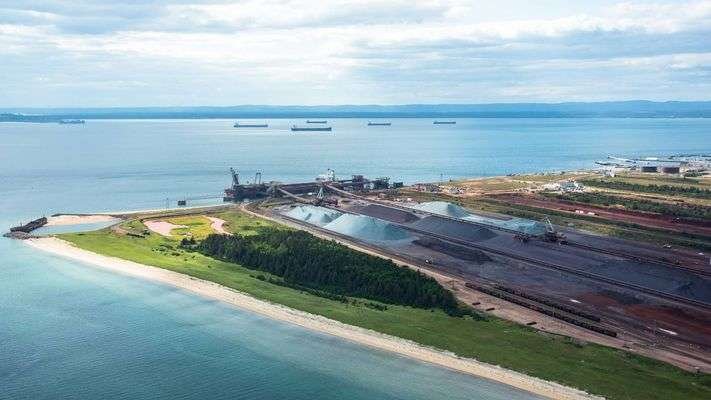Rio Tinto, Paul Wurth and SHS explore low carbon DRI in Canada

Rio Tinto, Paul Wurth S.A. and SHS-Stahl-Holding-Saar GmbH & Co. KGaA (SHS) have signed a Memorandum of Understanding (MoU) to explore the production of a low-carbon hot briquetted iron (HBI) using Midrex® technology.
Rio Tinto is an Anglo-Australian multinational metals and mining company. Paul Wurth S.A. is a Luxembourg HQ design and supply of engineering solutions for integrated steelmakers. SHS-Stahl-Holding-Saar GmbH & Co. KGaA (SHS) is a German HQ steelmaker.
The trio will study the viability of transforming iron ore pellets into low-carbon hot briquetted iron (HBI), as a low-carbon steel feedstock, using hydrogen produced by using hydro-electricity in Canada. The partners will conduct the entire value chain’s feasibility study, which is expected to be completed by the end of 2021, followed by the investment decision.
“As far as I know, there wouldn’t be any fossil fuels involved. The hydropower produced using turbines turned by water would be passed through water baths to separate H and O. The hydrogen would then be used in the plant to convert DR pellet into HBI,” Rio Tinto spokesman told H2 Bulletin.
Iron Ore Company of Canada (IOC) will supply high-grade iron ores and expertise in mining, processing and pelletising. IOC is a JV between Rio Tinto (58.7%), Mitsubishi (26.2%) and the Labrador Iron Ore Royalty Income Corporation (15.1%). Paul Wurth will be responsible for building and processing hydrogen generation and Midrex® direct reduction plants. SHS will employ its iron and steel making expertise.
The project is at an ideal location given Rio Tinto’s access to iron ore in the Canadian provinces of Quebec and Newfoundland and Labrador and cost-competitive hydro-electricity in Canada.
H2 Bulletin understands that HBI would be exported to Europe and more likely to SHS EAF furnaces in Europe. Low carbon HBI or green HBI also has great potential to help decarbonise the steel industry. With such initiatives, iron ore mining companies can even reduce their Scope 3 emissions. Iron ore mining companies have already been started partnering with steel companies to help reduce their scope 3 footprints.
Clayton Walker, IOC president and CEO said: “This partnership is part of Rio Tinto’s climate strategy to pursue pro-active and action-oriented partnerships to support the development and deployment of low-carbon technologies for hard-to-abate processes like steelmaking.”
Georges Rassel, CEO of Paul Wurth S.A, said: “This collaboration reflects Paul Wurth’s strategy to support our customers from the very beginning of their projects as a reliable and trusted partner.”
Martin Baues, Member of the Board of Directors for Technology at SHS-Stahl-Holding Saar said: “The use of hydrogen in steel production is a key factor in reducing carbon emissions. He said that the project would help the company gain significant experience in using hydrogen in steel production.
